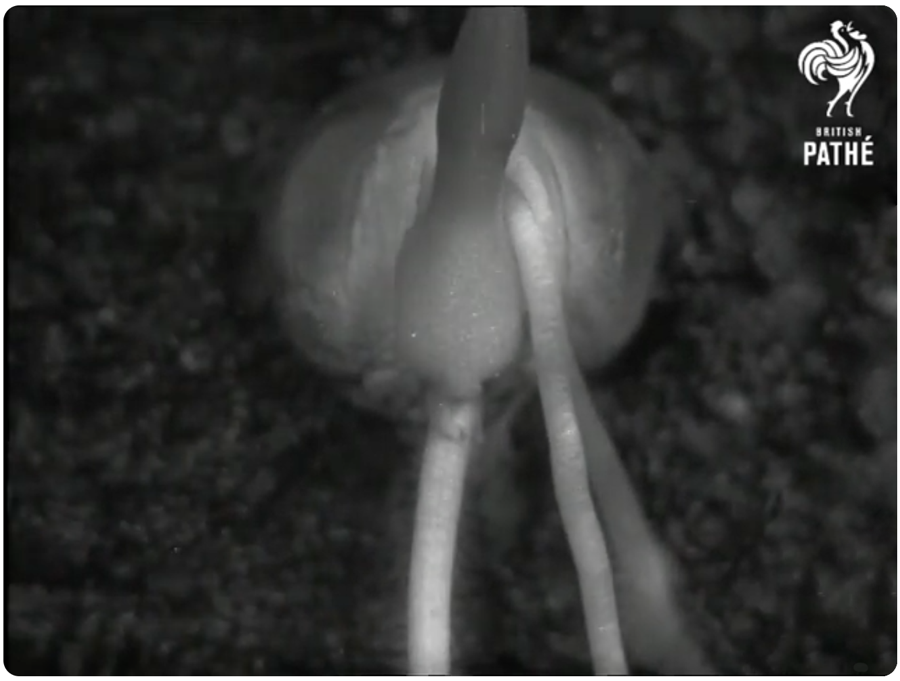Come for the pioneering stop-motion photography, stay for the jaunty 1930s soundtrack: Amazing Maize follows the life cycle of a humble corn kernel from crowded cob, one of 400 – 600 seeds, to fertilized plant. British Pathé shares the 1933 short.
Roots grow, a sprout transforms into unfurling leaves, and clouds of pollen fall upon long threads of “silk,” sticky flower strands that catch potent grains.
Amazing Maize is one of British Instructional Films’ 144 Secrets of Nature shorts, a black-and-white documentary series created between 1922 and 1933 to share “authentic amateur science” with movie-going audiences. From The Guardian:
“The quiet visionary of BIF was a man called Percy Smith – cinematographer, natural historian, boffin – in whose suburban house and garden (fondly named Southgate Studios) many of the films were made. Smith had been experimenting with natural history film techniques for years before BIF signed him.”
In the early 1900s, the naturalist filmmaker created illustrative animation sequences and painstakingly captured macro views with time-lapse—called “time-magnification” during that era.
Before that, he edited a scientific microscopy journal, studied spiders, “sold slides and gave natural history talks, accompanied by magic lantern displays of his own painted graphics,” and at 14, worked as a clerk for the British Board of Education.
Previously from Percy Smith: To Demonstrate How Spiders Fly (1909).
Watch these handpicked videos next:
• From seed to sapling: Time-lapse of an oak tree
• Seed germination to growth time-lapses by Neil Bromhall
• Popcorn Under A Microscope, a science and history short by NPR’s Skunk Bear
• Hopi Dryland Farming: Growing corn with rainfall in the desert
• The science of Blue Corn Mush, a classic indigenous recipe
Curated, kid-friendly, independently-published. Support this mission by becoming a sustaining member today.



